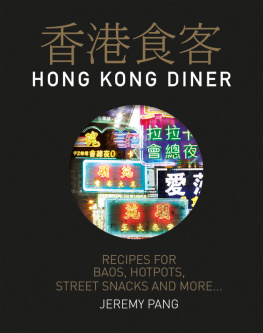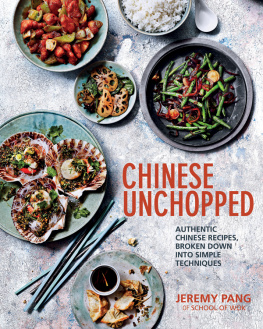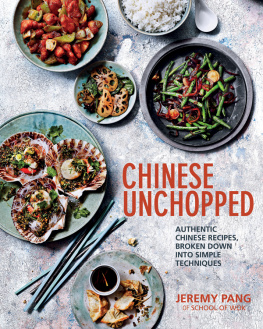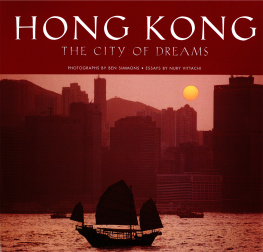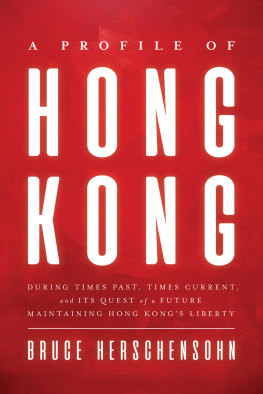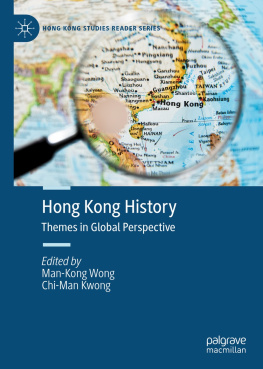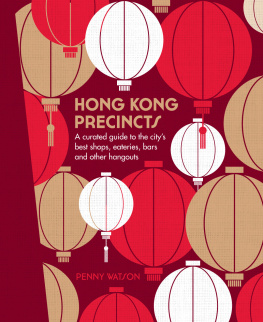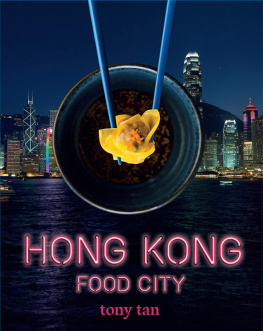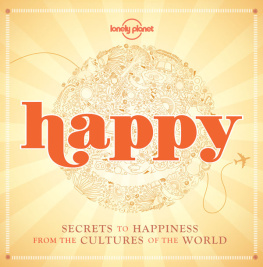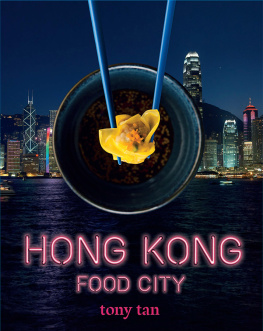

CONTENTS
In honour and remembrance of my beloved dad, Hiu Ming Pang, who had an undeniable love for Hong Kong, his true home. Also for my son, Theodore Monte Pang: once you are old enough to read, this book will tell you a lot about your Gong Gong, whom you never got to meet, but who spent his life making people smile with food just like this.

Both my parents grew up in Hong Kong; I, however, am what they call BBC British Born Chinese which has given me a unique perspective on both cultures. When my parents moved over from Hong Kong to the UK in the 1960s, Chinese food was already well established. In fact, many of the Chinatowns that we know today have barely changed since then. As I have come to learn from my own personal experience, we Chinese are true creatures of comfort. We love our traditions, and hold very close to them, especially in times of change; inadvertently adverse to any significant change in lifestyle. Even within my own city of London, I have met Chinese journalists who, having lived here for many years, have still never been inside many of the little hidden gem shops along the barely three-street-long stretch of the citys Chinatown, instead staying within the comfort of the same old restaurants, just in case the next one isnt quite the same. Creatures of habit indeed!
Although Chinese culture in general may seem to be adverse to immediate change, if I were to pick out what I believe to be the greatest asset to our successful immigration and integration across the world, it is that over time both we and our food are incredibly adaptable. Take the irreplaceable cha chaan teng for example: a unique combination both in cuisine and environment of the lasting influence of Western culture in Hong Kong, created as a response to British culture in the 1950s and now held in the hearts of Hong Kongers as a classic example of true Hong Kong cuisine. This is not to be confused with what we consider to be traditional Chinese food, with a menu that includes dishes like . Never let it be said that Hong Kongers arent adaptable, because if this isnt a clear example of adaptability then I dont know what is!
Food, to someone with Chinese heritage, is both a source of happiness and a tool which we use to build relationships and trust with others. My own truest and deepest friendships always seem to start over a large table filled with food to be shared.
Hong Kong is famous for its metropolis status: it is home to some of the worlds tallest buildings and sky-high restaurants, serving some of the best food out there. The city is constantly in flux, changing, pushing the boundaries of modernity. But I believe that what lies at the heart of this shiny, small, but infinitely layered city is the epitome of Chinese comfort food: the Hong Kong diner. The long reign of casual, caf-style and roadside eating is a culture both sustained and fuelled by the no-change attitude I mentioned earlier; providing comfort, happiness and even stability to those nestled in this ever-modernizing Jetson-like city. This seeming juxtaposition of ever-changing and evolving city, continuing to build its towers higher and higher, block by block, but at the same time housing the never-changing street food culture; the same queues wrapped around local favourites, bypassing the trendy for the steadfast staples decade upon decade from peanut butter French toast, used to mop up lashings of condensed milk, to a bowl of beef brisket noodle soup at any time of the day this is the real beating heart of this fair city. In my view, Hong Kong diner food should be considered some of the best of world cuisine. From the fresh ingredients to the care with which they are used, to the comforting, flavourful, straightforward, unpretentious, interactive way in which they are served, I cannot help but think of my numerous experiences eating in Hong Kong diners without feeling as though I have been engulfed and enriched alongside being well fed. Despite such places becoming more and more buried beneath the concrete jungle, I hope that true Hong Kongers out there will agree that their diner-style eating habits, in whatever form, will never be swallowed up completely by big buildings with fancy restaurants on top.
There are many different types of Hong Kong diner worth mentioning, each with their own style of cooking and varying menu sizes. Equally, each different style of diner also highlights a particular skill or technique that I find nothing short of astounding. From the dim sum chef to the man with his paper-thin wok on the side of the road, each hones a very specialized skill which I hope to, one day, find enough time and dedication to acquire. I hope that as you read this book not only will you try some of the recipes Ive researched and created, but also you will become equally excited and curious by the snippets of history of the citys unique eateries that I have included, along with some of my experiences, which have endeared this city to me, and inspired my cooking.
To many, Chinese cooking has always been a well-kept secret among those in the know. However, what many may not realize is that Chinese food, especially Cantonese food, most famously from Hong Kong and its surrounding region of South China, has been heavily influenced by the Western world. Even the specialist breads from the local bakeries bear a considerable resemblance to the French brioche, just with the addition of spam, barbecued pork or coconut custard on the inside or a good old British crumble on top instead! Hong Kong, once named the Pearl of the Orient, has had its fair share of Western occupation and influence. And when it comes to cultural invasion, interaction or occupation, no matter what part of the world it comes from, you can always trace back the history by means of the trail of food left behind.
With years of being a huge commuter town from East to West, it comes as no surprise that Hong Kong has such a diverse, on-the-move culture and dining scene. From cha chaan tengs (tea house lounges), to dai pai dongs (street hawker stalls), dim sum houses with their moving trolleys of hot pick-up-and-stuff-your-face style dumplings, and one-dish specialist cafs, to the unique dessert houses and bakeries that line the citys streets and hidden alleys, each one is able to tell one small but distinct portion of Hong Kongs unique story.
After seeking out and trying many wonderful examples of each of these distinct types of street-style eatery, then standing back to marvel at how they all interweave and overlap with each other, it is no wonder that this culture and city serve as such an inspiration for me, and for what I try to bring to my own cooking: playfulness, simplicity, a sense of family and community and a nod to my own familys history, all set against the backdrop of a cosmopolitan, diverse, historical and ever-changing community. This is the food I love to cook because this is the food I love to eat.
EXPERIENCING HONG KONG FOOD CULTURE UP CLOSE AND PERSONAL


